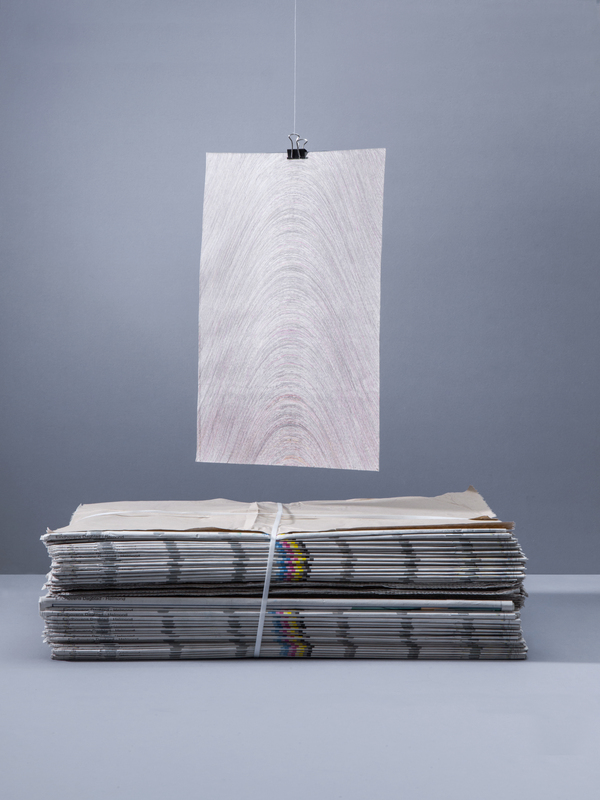However, there are some materials that are breaking new ground and have resulted in innovative and interesting ways to reduce waste and cut down on emissions. We did some research and found 5 of the most unique construction materials and how they can help towards the global climate mission.
1. ByBlocks
Advertised as a replacement for traditional concrete, the manufacturer of ByBlocks states that the product is: “the first construction-grade building material made entirely from repurposed, often un-recyclable plastic waste.”¹.
You can use these blocks in any scenario where concrete would normally be used, including furniture, various types of walls, sheds and many more, and unlike traditional concrete, can withstand excessive pressure and will not run the risk of structural damage resulting from crumbling or cracking. As well as this, ByBlocks do not require any type of glue or adhesives during the installation process, and be customised by density to fit your specific needs.
The list of environmental benefits of ByBlocks is extensive, including the fact that they are zero waste, and creates 83% less carbon emissions than traditional concrete blocks.
2. Newspaperwood
The issue of deforestation for paper production has been a talking point for many years, but certain innovators have found a way to reverse this process and create a sustainable new construction material, which turns newspaper back in to wood, and the better still, it looks the part too.
The recycled newspaper is bound together using solvent-free glue in to a log, which when cut, resembles the grain type pattern seen in traditional wood, which means that both practically and aesthetically, this product can be used in any project that would use traditional wood, from furniture to flooring.
As well as being 100% recyclable and biodegradable, Newspaperwood is also flame retardant, waterproof and can be easily customised and manipulated just like traditional wood, including sanding, varnishing, and waxing.

3. Earthborn Eco Friendly Paint
While there are many companies that manufacture eco-friendly paint, Earthborn are of particular significance in this space, due to the fact that they were the first UK brand to receive the EU Ecolabel for Indoor Paints and Varnishes – proving their commitment to the environmental cause.
The process of making paint eco-friendly is twofold, both through production processes and raw materials.
These paints contain either none or very little amounts of what are known as VOC’s (volatile organic compounds) – which is often used in traditional paints. These types of compounds emit carbon based gasses in to the air, which can not only be harmful to the environment, but also to your health.
It is important to note the distinction between eco-friendly and non-toxic paints, and paints claiming to include “natural” ingredients. There are plenty of raw materials that occur naturally in the environment that are incredibly detrimental to both your health and the surrounding landscape.
What are our eco-friendly practices?
These products and manufacturers are not the only ones taking the environment in to consideration while still providing materials that serve their purpose.
Here at IronmongeryDirect, we have either already adopted or are working towards adopting several methods and practices to reduce the environmental impact of the manufacturing process of our own brand products. These practices include both reducing the carbon footprint of our overseas factories, as well as ensuring anyone involved in the process of making our products are doing so in a healthy environment.
We are targeting eco-friendly initiatives at every stage of the process, starting with increasing ventilation and implanting water harvesting in factories, as well as recycling air, water and waste to reduce their overall carbon footprint.
On the materials side of things, our ongoing process to remove Cr6 (Hexavalent Chromium) from our products has reached a point in which the use of Cr6 has ceased completely, and steps are being taken to remove the process of galvanising in favour of more eco-friendly, but just as effective alternatives.
Cr6 not only causes severe adverse health effects in both liquid and gas form from even short term exposure, but the current disposal practices also cause mass pollution to soil, water and various wildlife. We are now manufacturing chrome plated products using Cr3, and other alternatives such as nickel plating, if you’re curious to find out the differences between nickel and chrome and which finish is best for your next project, you can find out more here.
Another pollution causing process is galvanising, which we are looking to move away from in favour of zinc plating, which is just as effective, and better still, carries a lower cost to consumers.
Our eco-friendly initiatives even carry through to our packaging, with our goal being to reduce the packaging of our own brand products by 33% and the rest comprising of either recycled or recyclable materials.
The industry is constantly in search for materials that perform to the standards that their clients have come to expect, while also reducing the impact to the environment that comes with the type of work involved. So, whether you’re looking for the latest in eco-friendly innovation, or just looking for everyday products with environmental impact in mind, it’s all out there for you to consider.
References: